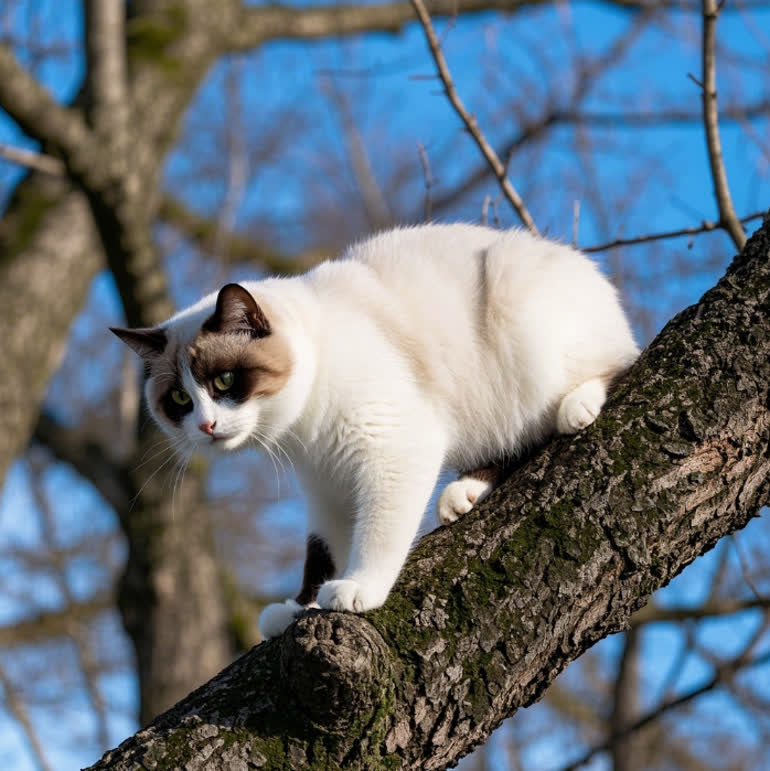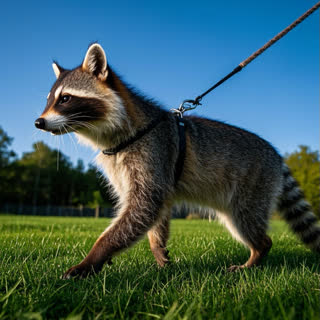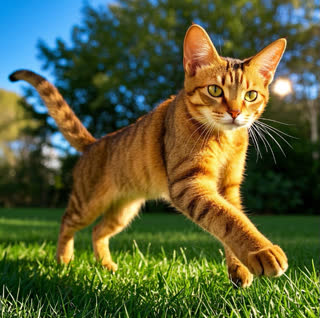The Snowshoe cat breed is a striking feline known for its unique markings, soft short hair, and vivid blue eyes. Originating from a cross between Siamese and American Shorthair cats, this breed features a distinctive inverted V-shaped facial pattern and white "snowshoe" paws. While their appearance is captivating, their care requires attention to grooming, nutrition, and socialization to ensure they thrive. This guide will walk you through essential steps for raising a happy and healthy Snowshoe cat, focusing on practical advice tailored to their specific needs.
1. Understanding the Snowshoe Cat’s Unique Needs
Snowshoe cats inherit traits from both Siamese and American Shorthair lineages. They are intelligent, playful, and highly social, often forming strong bonds with their families. However, their short, dense coat—thicker in winter—requires regular brushing to prevent matting and reduce shedding. Their active nature also demands mental stimulation and physical exercise to curb boredom.
Key traits to consider:
Social behavior: They thrive on interaction and dislike prolonged solitude.
Grooming needs: Weekly brushing suffices, but seasonal shedding may require more frequent care.
Health predispositions: Generally robust, but regular vet checkups are critical.
2. Nutrition: Feeding Your Snowshoe Cat
A balanced diet is vital for maintaining the Snowshoe’s muscular build and energy levels. High-quality commercial cat food, whether kibble or wet, should prioritize animal protein as the primary ingredient. Avoid overfeeding, as this breed can gain weight if portions are unchecked.
Diet tips:
Portion control: Follow feeding guidelines based on age, weight, and activity level.
Hydration: Ensure fresh water is always available; consider a cat fountain to encourage drinking.
Avoid human food: Chocolate, onions, and grapes are toxic to cats.
3. Grooming and Hygiene
Despite their short coat, Snowshoe cats benefit from weekly brushing to remove loose hair and distribute natural oils. Use a stainless-steel comb or soft-bristle brush for best results. Pay extra attention during seasonal changes when their coat thickens or thins.
Additional care:
Nail trimming: Clip nails every 2–3 weeks to prevent overgrowth.
Dental health: Brush teeth weekly with vet-approved toothpaste to prevent periodontal disease.
Bathing: Rarely needed unless the cat gets dirty or has skin issues. Use a gentle, cat-specific shampoo.
4. Enrichment and Exercise
Snowshoe cats are energetic and curious. Provide interactive toys like feather wands, puzzle feeders, and climbing trees to keep them engaged. Rotate toys weekly to maintain interest, and dedicate 15–20 minutes daily to play sessions.
Activity ideas:
Vertical space: Install cat shelves or a tall scratching post.
Interactive play: Laser pointers or automated toys stimulate their hunting instincts.
Companionship: Consider adopting a second cat to prevent loneliness.
5. Health Care and Vet Visits
Routine veterinary visits are essential for vaccinations, parasite control, and early detection of health issues. Snowshoe cats should receive core vaccines (e.g., rabies, feline distemper) and annual wellness exams. Spaying or neutering is also recommended to prevent behavioral and health problems.
Common health concerns:
Dental issues: Regular cleanings prevent tartar buildup.
Obesity: Monitor weight and adjust diet as needed.
Genetic conditions: While generally healthy, ask your vet about breed-specific screenings.
6. Creating a Safe Indoor Environment
Snowshoe cats adapt well to indoor living, which protects them from outdoor hazards like traffic and predators. Cat-proof your home by securing toxic plants, hiding electrical cords, and providing a quiet retreat for relaxation.
Safety tips:
Litter box hygiene: Clean daily and place it in a low-traffic area.
Toxic substances: Store cleaning supplies and medications out of reach.
Stress reduction: Use pheromone diffusers during changes like moving or new pets.
7. Socialization and Training
Start socializing Snowshoe kittens early to ensure they grow into confident adults. Reward-based training works well for teaching commands like "come" or discouraging unwanted behaviors. Their intelligence allows them to learn tricks and even walk on a leash.
Training strategies:
Positive reinforcement: Use treats or praise to encourage good behavior.
Consistency: Establish routines for feeding, play, and sleep.
Patience: Avoid punishment, which can damage trust.
Caring for a Snowshoe cat breed involves a blend of proper nutrition, regular grooming, and attentive health care. By understanding their unique needs and providing a stimulating environment, you’ll ensure your Snowshoe remains a joyful and healthy companion for years to come. Always consult your veterinarian for personalized advice tailored to your cat’s specific requirements.










